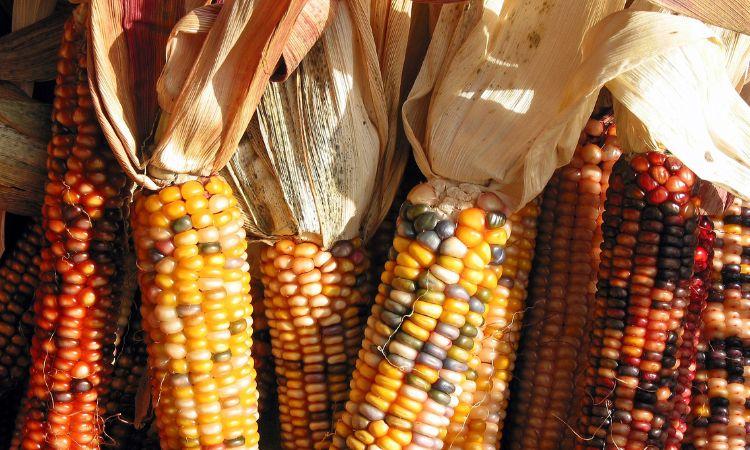The global corn market size reached a volume of 1183.43 million metric tons in 2023. The market is expected to grow at a CAGR of 1.1% between 2024 and 2032. These numbers underscore the significance of corn in the global agricultural landscape. Corn, also known as maize, is a staple crop with diverse applications, ranging from food and animal feed to biofuels and industrial products. Given its crucial role in feeding both humans and livestock, understanding the factors that influence corn production and prices is of paramount importance. One of the most influential and unpredictable factors in this equation is the weather.
In this comprehensive blog post, we will delve deep into the impact of weather on corn prices and crop yields. We will explore the intricate relationship between meteorological conditions and the corn market, examining how weather variables, historical patterns, and climate change predictions affect corn production and its subsequent pricing. Additionally, we will discuss strategies employed by farmers and stakeholders to mitigate weather-related risks and adapt to a changing climate.
Factors Affecting Corn Yields
Before we dive into the correlation between weather and corn production, it’s essential to understand the various factors that can influence corn yields. These factors include:
1. Weather Variables
Rainfall
Rainfall is a critical factor in corn cultivation. Adequate and timely rainfall during the growing season is essential for optimal crop development. However, excessive rainfall, especially during the harvesting period, can lead to waterlogged fields and reduced yields. On the other hand, drought conditions can significantly impact corn yields, leading to stunted growth and smaller cobs.
Temperature
Temperature plays a vital role in determining the length of the growing season and the rate of corn growth. Corn is a warm-season crop that requires specific temperature ranges for optimal growth. Extreme temperatures, both high and low, can negatively affect corn yields. Heatwaves during pollination can lead to poor kernel development, while frost can damage young corn plants.
Sunlight
Sunlight is crucial for photosynthesis, the process by which plants convert sunlight into energy for growth. Corn plants require ample sunlight for healthy development. Reduced sunlight due to cloud cover or shading from other crops can result in lower yields.
2. Soil Conditions
The quality and health of the soil in which corn is grown can significantly impact yields. Soil fertility, pH levels, and nutrient content are crucial factors. Proper soil management practices, including fertilization and irrigation, can help optimize soil conditions for corn production.
3. Pest and Disease Outbreaks
Pests and diseases can ravage corn crops if not effectively managed. Weather conditions can influence the prevalence and severity of these issues. For example, warm and humid conditions can favor the proliferation of certain pests and diseases, leading to yield losses.
4. Technological Advancements in Farming
Advancements in agricultural technology, such as precision farming and genetically modified (GM) crop varieties, have the potential to mitigate some of the challenges posed by weather and other factors. GM corn varieties, for instance, can be engineered to resist pests and tolerate adverse weather conditions to some extent.
Now that we’ve explored the factors that affect corn yields, let’s examine how different weather patterns can impact corn production.
Weather Patterns and Corn Production
The relationship between weather patterns and corn production is complex and multifaceted. Different weather conditions can have varying effects on corn growth and yields. Here, we’ll explore how some common weather patterns influence corn production:
Droughts
Droughts are among the most detrimental weather events for corn farmers. A prolonged period of insufficient rainfall can lead to moisture stress in corn plants, inhibiting their growth and development. Drought conditions during crucial stages of corn growth, such as flowering and pollination, can result in poor kernel formation and reduced yields.
Historically, regions susceptible to drought have experienced significant fluctuations in corn yields and prices. The severity and duration of droughts can vary, but their impact on corn production is consistently negative. Farmers in drought-prone areas often face challenges in maintaining consistent yields and may resort to irrigation and water management strategies to mitigate the effects of water scarcity.
Floods
While droughts are a clear threat to corn production, excessive rainfall and flooding can also wreak havoc on corn fields. When fields become waterlogged, corn plants may experience root damage, reduced nutrient uptake, and even complete submersion, leading to crop loss. Flooding can delay planting and harvesting, disrupt nutrient cycling in the soil, and foster the growth of harmful pathogens.
It’s worth noting that the timing of excessive rainfall is critical. Heavy rains during planting can delay the sowing of corn, while flooding during the critical pollination period can result in poor kernel development and yield losses.
Extreme Temperatures
Extreme temperatures, whether excessively hot or cold, can have adverse effects on corn crops. High temperatures during the flowering stage can cause a phenomenon known as “heat stress,” which can lead to poor pollination and kernel abortion. Conversely, late spring frosts or early fall freezes can damage young corn plants or prematurely kill the crop.
Corn’s sensitivity to temperature fluctuations makes it vulnerable to the unpredictability of weather patterns. Farmers must monitor temperature forecasts closely and consider planting and harvesting dates accordingly.
Historical Weather Data and its Correlation with Corn Yields
To gain a deeper understanding of the impact of weather on corn yields, researchers and analysts often turn to historical weather data. By examining weather patterns and their correlation with corn production over time, valuable insights can be gleaned regarding the relationship between meteorological conditions and agricultural outcomes.
For example, a study might analyze decades of weather and corn yield data to identify trends and patterns. Researchers can then determine which weather variables have the most significant influence on yields and how their interplay affects corn production. This historical perspective can be instrumental in making informed decisions for future planting and risk management strategies.
Weather Impact on Corn Prices
The impact of weather on corn prices is a topic of great interest to farmers, traders, and consumers alike. Weather-related events can cause significant fluctuations in corn prices, both in the short term and long term. Let’s explore how weather affects corn prices and some notable case studies to illustrate these dynamics.
Short-term vs. Long-term Effects
Weather-related factors can have both short-term and long-term effects on corn prices:
Short-term Effects
-
Price Volatility: Unpredictable weather events, such as sudden storms or drought warnings, can lead to short-term price spikes as traders react to the news. For example, a forecast of impending drought in a major corn-producing region can cause speculators to buy corn futures, driving prices higher.
-
Supply Shocks: Severe weather events, such as floods or hailstorms, can lead to sudden supply shocks by damaging or destroying corn crops. When the supply of corn decreases rapidly due to such events, prices can surge in response to the reduced availability of the commodity.
Long-term Effects
-
Yield Trends: Prolonged weather patterns, such as a series of wet or dry years, can influence long-term yield trends. If several consecutive years experience below-average yields due to adverse weather conditions, it can result in lower overall corn production, leading to sustained higher prices.
-
Investor Sentiment: Long-term weather trends can influence investor sentiment in the corn market. For example, persistent concerns about changing climate patterns and their impact on corn production can lead to long-term speculative trading and price increases.
Case Studies of Weather-Related Price Fluctuations
To illustrate the connection between weather and corn prices, let’s examine a couple of real-world case studies:
Case Study 1: The 2012 U.S. Drought
One of the most memorable instances of weather-induced corn price spikes occurred in 2012 when the United States experienced a severe drought. The drought, which affected key corn-producing states like Illinois, Iowa, and Indiana, led to significant yield reductions. As a result, corn prices skyrocketed, reaching record levels.
Farmers faced substantial losses due to crop failures, while livestock producers were hit by soaring feed costs. Additionally, the ethanol industry, which relies heavily on corn, felt the impact, leading to discussions about potential policy interventions.
Case Study 2: La Niña and South American Corn Production
The La Niña weather phenomenon, characterized by cooler-than-average sea surface temperatures in the equatorial Pacific Ocean, can have a profound impact on weather patterns worldwide. One notable effect of La Niña is its influence on South American corn production.
During La Niña events, South America tends to experience drier and warmer conditions, particularly in regions like Argentina and Brazil. These conditions can lead to reduced corn yields, which, in turn, can affect global corn prices. As South America is a major player in global corn production, any disruptions in their output can send ripples through the corn market.
These case studies highlight the vulnerability of the corn market to weather-related events and underscore the importance of monitoring meteorological conditions for corn market participants.
Role of Weather Forecasts in Commodity Trading
In the age of advanced technology, weather forecasting has become an invaluable tool for commodity traders and farmers alike. Timely and accurate weather forecasts allow market participants to make informed decisions and manage risks effectively.
Short-term Trading
For short-term traders, weather forecasts serve as a vital source of information. Traders closely monitor weather predictions to anticipate potential disruptions to corn production. For example, if a forecast indicates the likelihood of heavy rainfall in a major corn-producing region during the critical pollination period, traders may take positions in the corn futures market to capitalize on expected price increases.
Long-term Planning
Farmers and agricultural businesses rely on weather forecasts for long-term planning. These forecasts help them make decisions regarding planting dates, crop selection, and irrigation management. Farmers can adjust their strategies based on the anticipated weather conditions for the growing season, aiming to optimize yields and minimize risks.
Additionally, long-term weather forecasts play a role in supply chain management. Food manufacturers and processors often use weather predictions to plan their procurement and production schedules. A poor corn harvest due to adverse weather conditions can lead to supply chain disruptions and affect the availability of corn-based products in the market.
In the next section, we will explore strategies employed by farmers and stakeholders to mitigate the risks associated with weather fluctuations and adapt to a changing climate.
Mitigating Weather-Related Risks in Corn Farming
Given the unpredictable nature of weather, farmers and stakeholders in the corn industry have developed various strategies to mitigate the risks associated with weather-related challenges. These strategies aim to protect crop yields, reduce financial losses, and ensure a stable supply of corn. Here are some of the key approaches:
Crop Insurance and Risk Management Strategies
Crop insurance is a crucial risk management tool for farmers. It provides financial protection in the event of crop losses due to weather-related events, pests, diseases, or other covered perils. Crop insurance policies can help farmers recover a portion of their losses, allowing them to continue operating in the face of adversity.
Crop insurance programs vary by region and country, but they often involve government subsidies to make coverage more affordable for farmers. The availability and terms of crop insurance can significantly impact farmers’ decisions regarding planting and risk-taking.
Aside from insurance, farmers employ various risk management strategies:
Diversification
Farmers often diversify their crops to spread risk. Planting a variety of crops with different growing requirements and harvest times can help mitigate the impact of adverse weather on their overall income. If one crop is affected by unfavorable conditions, others may still thrive.
Crop Rotation
Crop rotation is a farming practice that involves changing the type of crop planted in a field from one season to the next. This strategy helps break pest and disease cycles and can improve soil health. By diversifying the crops in their rotation, farmers can reduce the risk of weather-related losses affecting their entire operation.
Adoption of Climate-Resilient Farming Practices
As climate change introduces greater uncertainty into weather patterns, farmers are increasingly adopting climate-resilient farming practices. These practices are designed to help crops withstand extreme weather events and changing climate conditions. Some examples include:
No-Till Farming
No-till farming involves planting crops without plowing the soil. This reduces soil erosion, conserves moisture, and helps sequester carbon in the soil. No-till practices can make crops more resilient to drought conditions by preserving soil moisture.
Precision Agriculture
Precision agriculture utilizes technology such as GPS, sensors, and data analytics to optimize farming practices. Farmers can use precision agriculture to precisely manage irrigation, fertilization, and planting, minimizing resource waste and maximizing crop resilience.
Cover Crops
Cover crops are planted in between main crop rotations to protect and improve the soil. They can enhance soil structure, reduce erosion, and provide additional resilience to adverse weather conditions.
Diversification of Income Sources
Some farmers diversify their income sources beyond crop production. This might include adding livestock to the farm or engaging in alternative income-generating activities, such as agritourism. Diversification can help farmers maintain financial stability during years of poor crop performance.
Government Policies and Weather-Related Support
Governments around the world recognize the importance of supporting farmers in managing weather-related risks. To that end, they often implement policies and programs aimed at providing financial assistance and resources to agricultural producers affected by adverse weather conditions. Here are some ways in which governments offer support:
Crop Insurance Subsidies
Many governments provide subsidies to reduce the cost of crop insurance for farmers. These subsidies make insurance more accessible and affordable, encouraging more farmers to participate in risk management programs.
Disaster Relief Programs
In the aftermath of severe weather events or natural disasters, governments may establish disaster relief programs to provide financial assistance to affected farmers. These programs can help farmers recover from crop losses and repair damage to their operations.
Research and Extension Services
Government agencies often fund agricultural research and extension services that provide farmers with information and tools to adapt to changing weather conditions. These services may offer guidance on climate-resilient farming practices and the latest technology.
Climate-Resilience Initiatives
In recognition of the growing threats posed by climate change, some governments invest in climate-resilience initiatives for agriculture. These programs may include funding for infrastructure improvements, water management projects, and climate adaptation research.
Government support is crucial in helping farmers manage the risks associated with weather fluctuations and ensuring the stability of food and agricultural supply chains.



